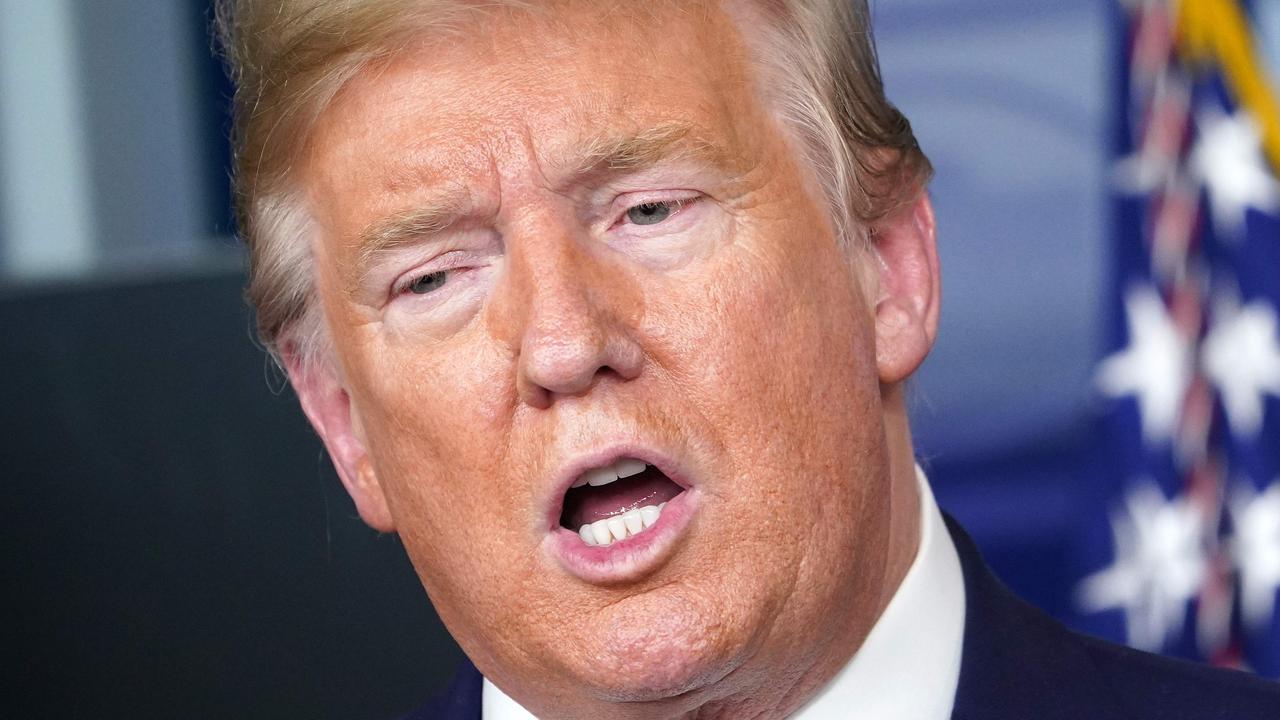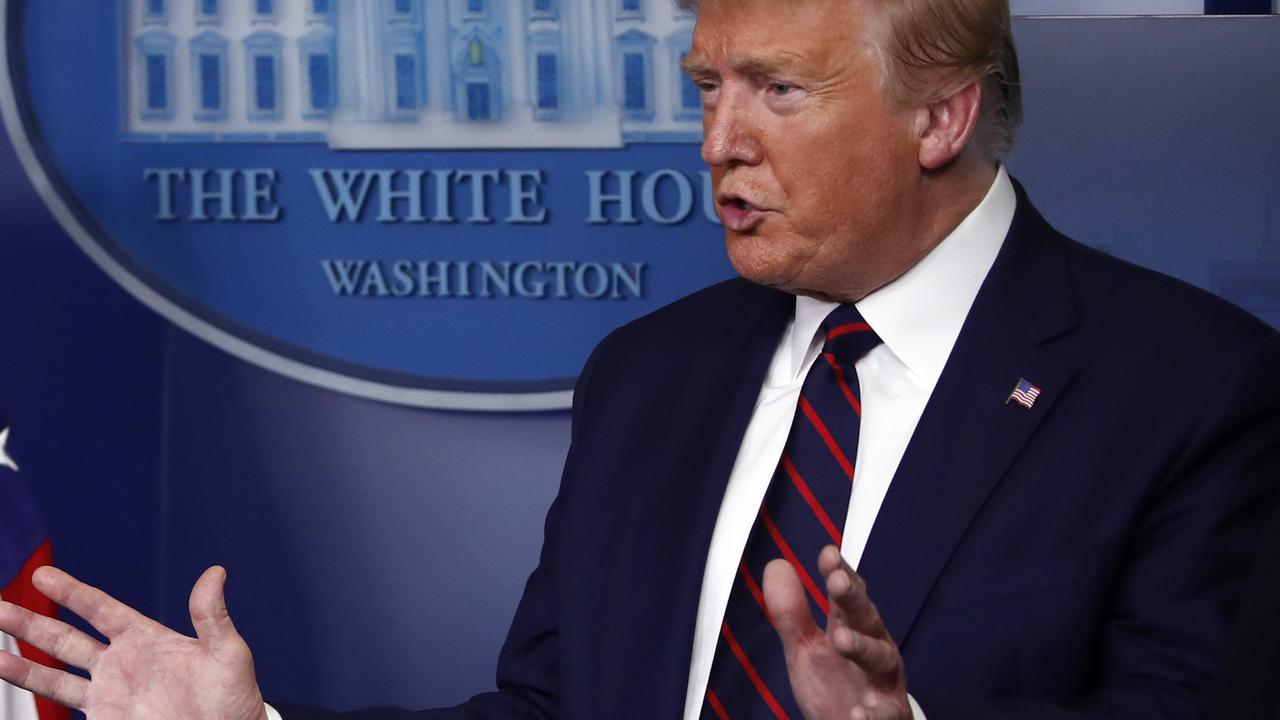Coronavirus: How Australia’s testing compares to the United States
Donald Trump and Scott Morrison have both made the same boast about their coronavirus response this week. They can’t both be right.
At today’s White House coronavirus briefing, President Donald Trump made a claim that should sound familiar to many Australians.
“We’re now conducting well over 100,000 coronavirus tests per day,” Mr Trump said.
“It’s over 100,000 tests a day. And these are accurate tests, and they’re moving rapidly, which is more than any other country in the world, both in terms of the raw number and also on a per capita basis. The most.”
It was the latest version of a boast Mr Trump has made repeatedly this week – that the United States has done “far more testing than anywhere else in the world”.
And I say it should sound familiar, because yesterday Scott Morrison made essentially the same claim about Australia.
RELATED: PM says Australia is leading the world in coronavirus testing
“Australia has now reached a testing rate of more than 1000 tests per 100,000 population. That is 1 per cent of the population. We are the first country, to the best of our knowledge, that has been able to exceed that mark,” Mr Morrison said.
“The testing resources that we are putting in place have been absolutely fundamental to our tracing, and other measures that we are taking at a state level, to ensure that we can contain the growth and spread of the virus.
“Those testing figures are the result of some incredible work that has been done by the health ministers, and the securing of the testing materials themselves and their application right across the country.
“It has been an extraordinary, mammoth testing effort, and that has put Australia on top when it comes to ensuring we have the best information on tracking the virus.”
Mr Trump and Mr Morrison both say their country is leading the world in coronavirus testing. And it turns out both of them have a point.
It all depends on which statistic you pick.


In terms of the pure, raw numbers, the United States has tested more people for the virus than any other country. According to Vice President Mike Pence, it passed 1.2 million tests earlier this week. Germany has the second-highest total with over 900,000.
However, Mr Trump’s claim that America has the highest rate of testing per capita is blatantly incorrect.
The United States has a population of 327 million people. If 1.2 million of them have been tested, that means a testing rate of about one in every 273 Americans.
We already mentioned Germany. Yes, it has carried out roughly 300,000 fewer tests than America, but it’s done so with a smaller population of 83 million. Do the maths, and you find that it has currently tested about one in 90 people.
Then there is Australia. When Mr Morrison spoke yesterday, Australia had tested more than 261,000 people – again, a far smaller number than America’s.
But we also have a far smaller population of 24.6 million, which means we have tested about one out of every 100 people.
So, the United States has conducted more tests than anyone else. Mr Trump is right about that. But Australia has tested a significantly higher proportion of its population. Mr Morrison is right about that.
RELATED: Australia has tested 1 per cent of its entire population
Speaking today, our chief medical officer Brendan Murphy cited Australia’s extensive testing compared to other nations as the reason he did not fully trust anyone else’s data.
He suggested the true number of global coronavirus cases could be five or even ten times higher than is currently being reported.
RELATED: Global figures might be ‘5-10 times higher’ than current estimates
“I think the only numbers I have total faith in are the Australian numbers, frankly, because we have the highest testing rate in the world,” Professor Murphy said.
“I’m certainly not confident even the numbers out of the US aren’t much higher than are being reported, because nobody else in the world has been doing testing like we have.
“Nobody else in the world got on to all those original cases out of Wuhan in January and contained them. That’s why we are now dealing with what we know, rather than a huge community transmission that happened all through February in countries like Italy and the US. We’re on top of the cases. But we still have a long way to go.”

Prof Murphy’s assessment captured a big part of the problem with testing in the United States. The rate has accelerated exponentially in recent weeks, but it got off to an incredibly slow start.
First the Trump administration rejected test kits from the World Health Organisation, preferring to rely purely on tests developed by its medical agency, the Centres for Disease Control. Then those US-developed tests proved to be deeply flawed, and had to be re-manufactured.
So, for weeks, the country suffered from a severe shortage of test kits, which allowed the virus to spread virtually undetected.
That is what Prof Murphy was getting at. While he believes Australia is “on top” of where most cases of the virus are, America lost track of it in February when barely any testing was being conducted.
The other key difference between the two countries is the availability of testing. Even last month, when the shortage was finally being rectified, there were plentiful reports of Americans who could not get tested despite showing symptoms of the virus.
A company called Everlywell eventually developed a test they could take at home, but it is expensive – more than $AU200 – and there is no guarantee people will use it correctly.
You try jamming a swab so far up your nostril that it feels like you’re touching your brain – you might struggle to do a thorough job.
In Australia, by contrast, testing is free and available to anyone who meets the government-set criteria. Those rules differ slightly from state to state, but generally, you can get a test if you have just returned from overseas or a cruise; been in close contact with a confirmed case; or have severe pneumonia without any clear cause.
The rules are looser if you have a fever or respiratory illness. And in New South Wales, for example, it’s even easier – GPs can give a test to anyone showing symptoms of the virus.
If the question is which country has a more comprehensive testing regime, then the answer is quite clearly Australia.




